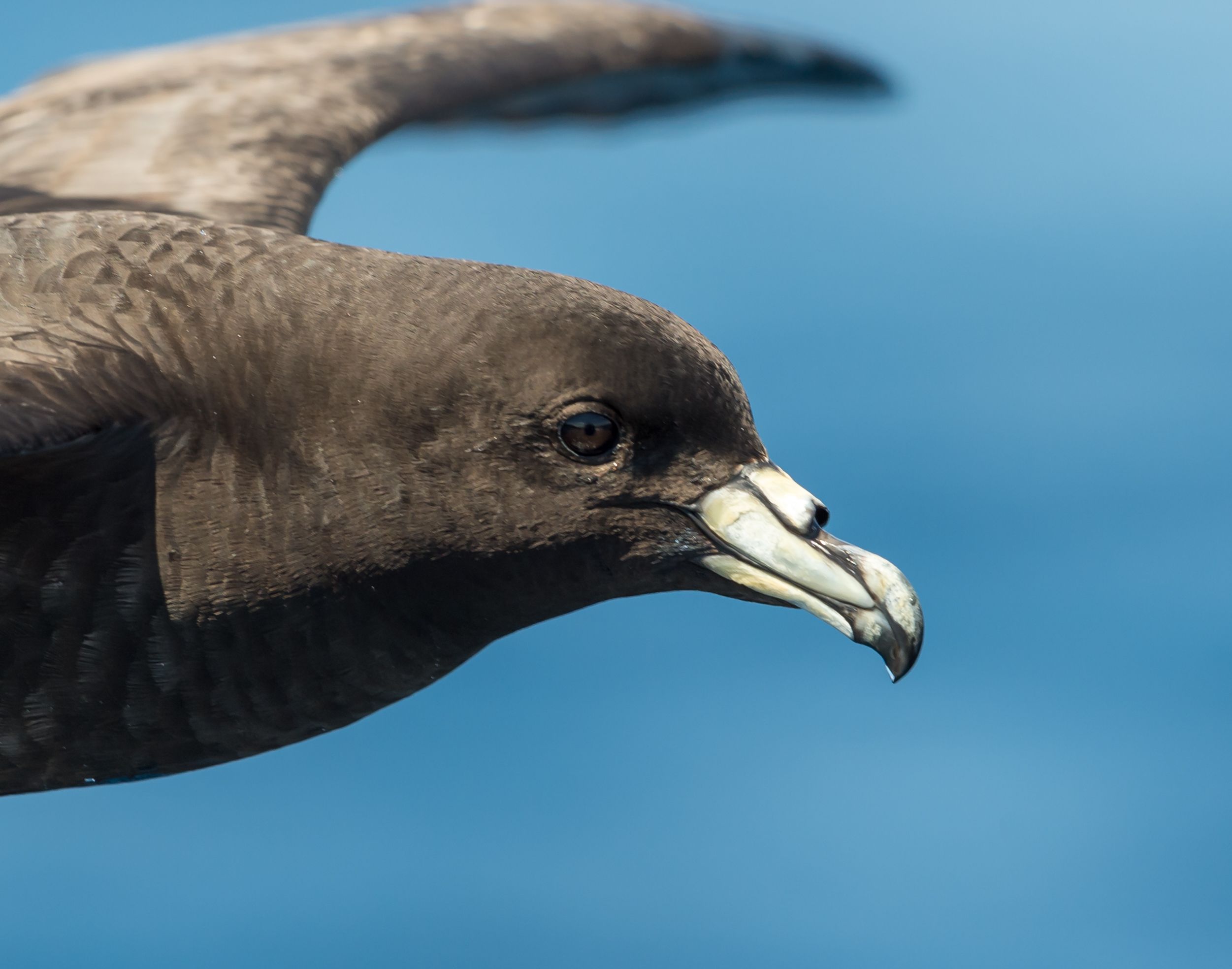
Black Petrel at sea, photograph by Kirk Zufelt
Javier Quinones (Oficina de Investigaciones en Depredadores Superiores, Instituto del Mar del Perú, Callao, Perú) and colleagues have published in the journal Notornis on ACAP-listed and globally Vulnerable Black Petrels Procellaria parkinsoni observed in Peruvian waters.
A total of 47 Black Petrels was recorded during at-sea surveys off the coast of Peru during February and March 2020; nearly all over the continental slope. The short note ends:
“As most adult black petrel[s] are nesting in New Zealand during this period, it is evident that part of the population at different age classes is spending their summers in northern Perú. These birds are likely to be affected by different levels of risk associated with human-induced factors including fisheries bycatch, pollution events and climate change compared to those birds that migrate to breed in New Zealand. Management measures such as the creation of a Marine Important Bird Area in the highly productive waters of Northern Perú and introducing mitigation measures to fisheries vessels could help protect this vulnerable New Zealand species whenever they are present in the region.”
With thanks to Roger Sharp, Web Support, Birds New Zealand.
Reference:
Quinones, J., Calderon, J., Mayaute, L. & Bell, E. 2020. Black petrel (Procellaria parkinsoni) congregations at sea off Perú during the Austral summer. Notornis 67: 573-576.
John Cooper, ACAP Information Officer, 21 January 2021

 Español
Español  English
English  Français
Français